|
In the Medical Home Model of healthcare, it is imperative that the patient participates in their own care. Terms like “activated,” “engaged,” and “shared decision making” are important descriptions of the dynamic of the patient participating in and actually “taking charge” of their own care. As part of this process, it is important that the patient’s preparation to change be sustained. In other tools, SETMA discusses the power of “What if Scenario,” which addresses the providers ability to quantify for the patient that fact that “if they make a change, that that change will make a difference in their health.” This is principally done through the Framingham Risk Scores and the ability to display the difference a change in behavior will make. That tool can be reviewed in either:
- “SETMA’s Disease management tools for Diabetes, Hypertension and Lipids used for patient activation and engagement via written plans of care and treatment plans.”
- Framingham Heart Study Risk Calculators Tutorial
The assessment of a patient’s preparation to make a change can most effectively be done through the Transtheoretical Model Assessment of the Stages of Change which can measure the patient’s preparation of making the changes recommended in SETMA’s “What if Scenario.” The following steps explain how to use SETMA’s deployment of the Transtheoretical Model.
There are two ways to access the Model: the first is from the AAA Home template and the second is from the Medical Home Coordination Review template.

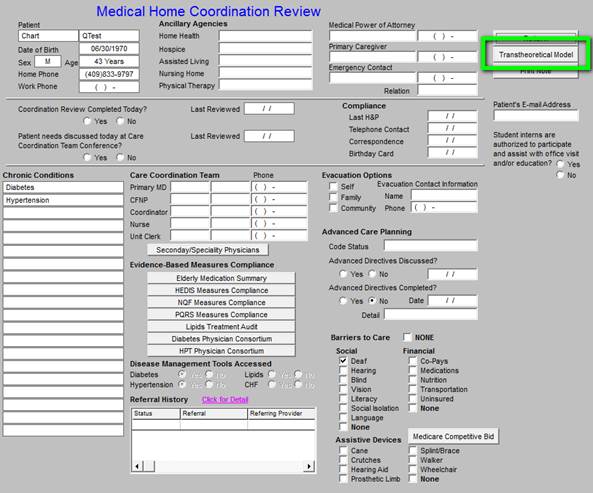
The fourth column of the Medical Home Coordination Review template contains three navigation buttons:
- The first is entitled RETURN takes you back to AAA Home
- The second launches he Transtheoretical Model Assessment template
- The Third is entitled Print note and it prints the Medical home Coordination
Review document which is to be given to the patient.

Clicking the Transtheoretical Model button launches the following pop-up.
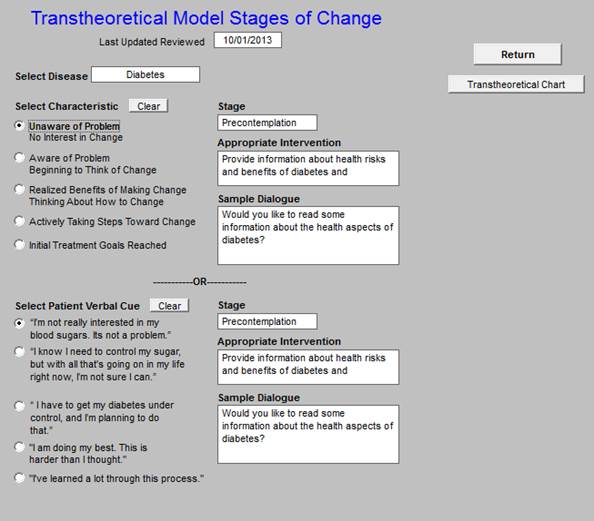
This tool allows you to assess and document, the patient’s current state of readiness to change their behavior. There are five, disease-specific options. Each option provides precise language for discussing with a patient their “readiness to change their behavior” of reach of the following conditions:
- CHF
- Diabetes
- Hypertension
- Lipids
- Weight Management
You access these disease-specific options by selecting them from the disease field.
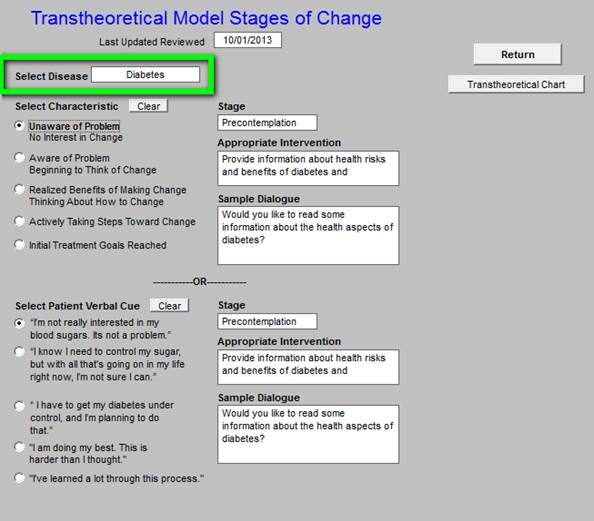
When you click in this field you will get a pop-up with the following options.
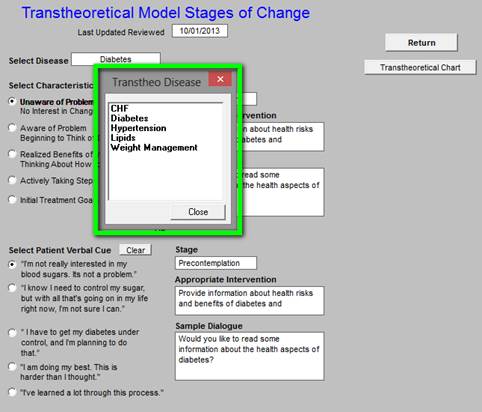
In that one of the goals of Medical Home is patient self-improvement and self-management, it is important to be aware whether the patient is ready to make a change in his/her health and to have a recommendation as to how to address the patient’s current state of readiness.
If a patient has not reached his/her goal in one of these conditions, or if the patient is not improving toward reaching that goal, the Transtheoretical-Model Assessment should be completed in order to assess where the patient is and what steps are required to encourage them to improve their health.
The results of this assessment will appear on the printed note which will be given to the patient and which will summarize the review of the Medical Home Coordination of Care. If more than one condition is assessed with this tool both will appear on the chart note.
Here is what the template would look like for a patient who has uncontrolled diabetes and who is not well motivated to change.
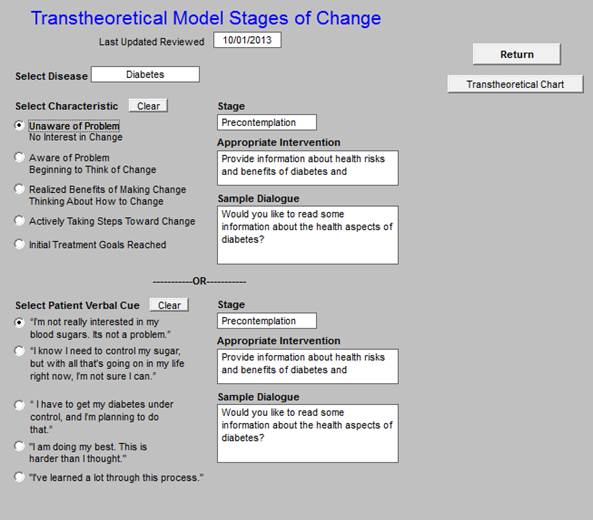
Under the heading “Select Characteristic”, there are five choices which will display the patient’s Stage of Change for the response they give. Depending upon which response a patient gives, one of the following stages will be displayed:
- Pre-contemplation
- Contemplation
- Preparation
- Action
- Maintenance
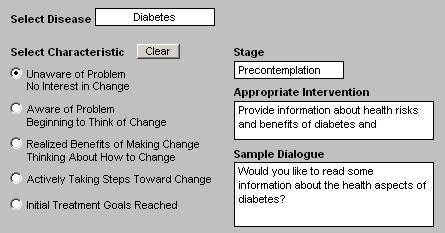
When a Stage of Change is selected, the following will be displayed:
- Stage of change
- Appropriate Intervention
- Sample dialogue
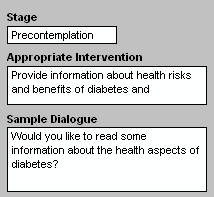
Under the heading “Select Patient Verbal cue” there are five choices which are linked to the patients Stage of Change. Once the Stage of Change is selected, the patient’s Verbal Cue should be noted.
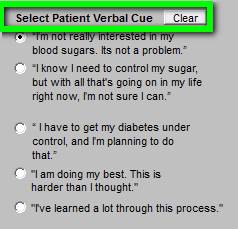
Depending upon the Patient’s “Verbal Cue” the following will appear:
- Stage of Change
- Appropriate Intervention
- Sample Dialogue
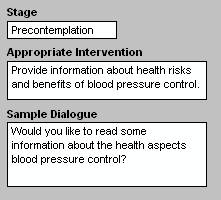
To the right of these boxes, there is a button entitled Transtheoretical Chart.
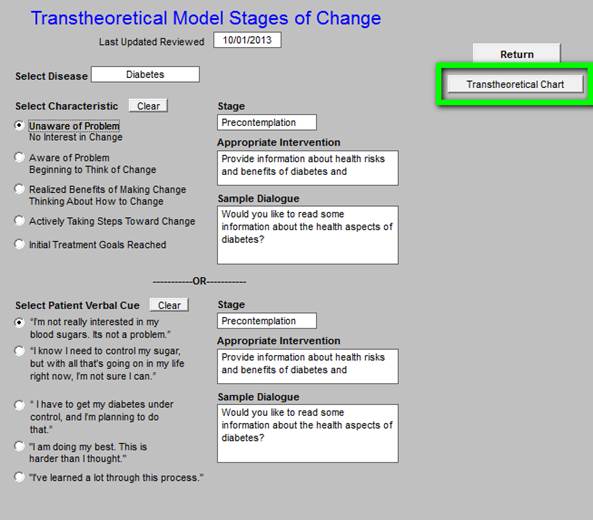
When activated the entire chart for the condition chosen will appear. For instance if you had chosen “weight management,” the following would appear.
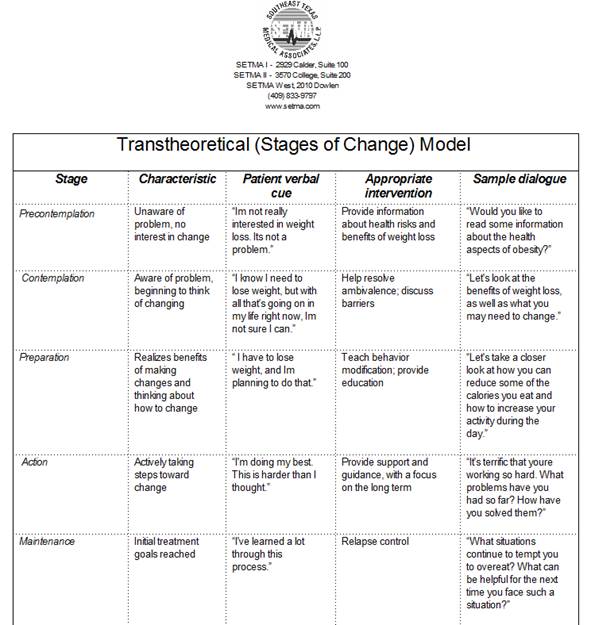
If you wish to use this tool to assess more than one condition in a visit, simply select as many of the options you wish and ALL of them will appear on your Medical Home Coordination Review document.
When you are through with this tool, click, Returnand it will take you back to the Medical Home Coordination Review template.

The button under the Transtheoretical Model Assessment is Print Note. Once the entire Medical Home Coordination Review has been completed, this button is launched in order to prepare a document which is given to the patient with the following instruction:
“This is a working tool. It is imperative that you review it for completeness, accuracy and usefulness to you. You should schedule a visit if any of your preventive health issues have not been completed and/or if there are issues raise with your review which require and explanation. You may choose to call your Nurse or Care Coordinator rather than scheduling a visit. The choice is yours.”
|